Stand Up Paddle Boarding: A Beginner’s Guide
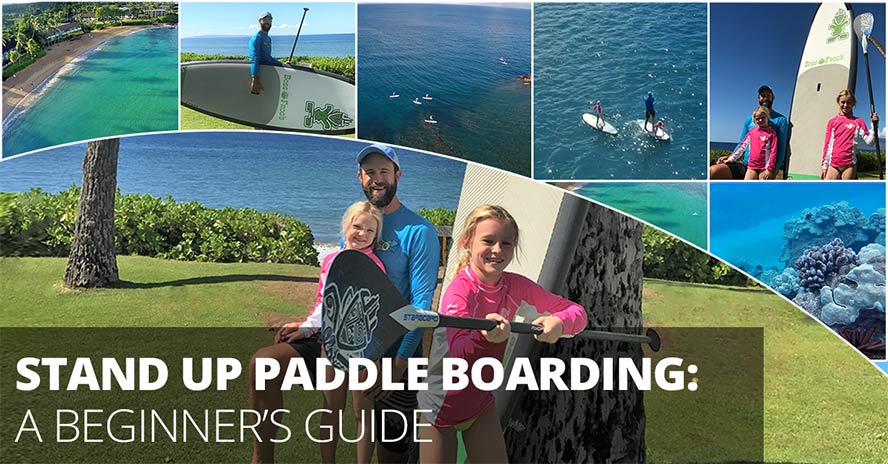
Aloha from Boss Frog’s! We’re one of the Hawaiian Islands’ favorite places to rent stand up paddle boards (SUPs), surfboards, boogie boards, snorkeling gear, and bicycles. We’ve also got the hookup when it comes to discount activities, including learning how to SUP in the first place! We opened our first shop in 1989, and today we’ve got a Stand Up Paddle Boarding Primer for you.
Stand up paddle boarding is tons of fun. It’s a lot simpler and considerably less work than surfing. The main objective of SUPing is to look at the reef from above. Fishes, sea turtles, and even manta rays are easy to see from this higher vantage point.
Every paddle board is long, wide, and stable – essentially a floating platform designed to keep you on board. If the day is calm, and you take a little time to learn, you’ll be gliding about in no time!
Moving the Paddle Board
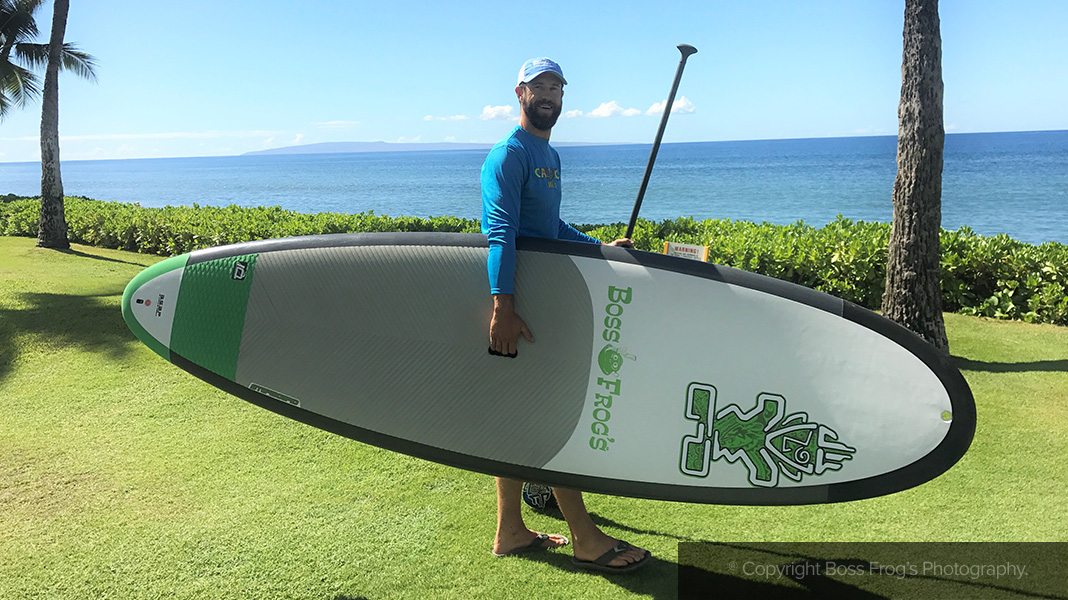
First of all, to get your stand up paddle boards to the beach, you’ll strap them to the top of your vehicle. Our rentals staff will gladly help with that, but afterwards it’s SUP to you. Use the handle in the center of each board to carry them down to the water. That will take some strength, so be prepared. But what happens once you’re floating on the ocean? I’ll tell you!
Find the center handle, and stand with your feet to either side of it. Keep your knees slightly bent at all times. Feel free to start stand up paddle boarding on your knees so you can find your balance. Since the waters you’ll be plying will be calm, you can also just sit down for awhile to rest.
Cross your body with one arm, and hold the tip-top of the paddle with that hand. This will give you the downward drive you need to thrust the paddle into the water. With your other hand, grip the handle about two feet down from the top. (You’ll find a comfortable distance for you.) When you paddle on the right side of the board, it’s left hand up and right hand down. Switching sides? Switch your hand positions, too!
Use your core muscles and bend at the waist for each stroke. Do not force your arms to do all the work; you’ll tire more quickly that way.
When you want to turn right, step back with your left foot and paddle on the left side of the board. When heading left, do just the opposite. Once you’ve turned, center your feet again (otherwise you’ll just keep turning).
Where To Paddle Board
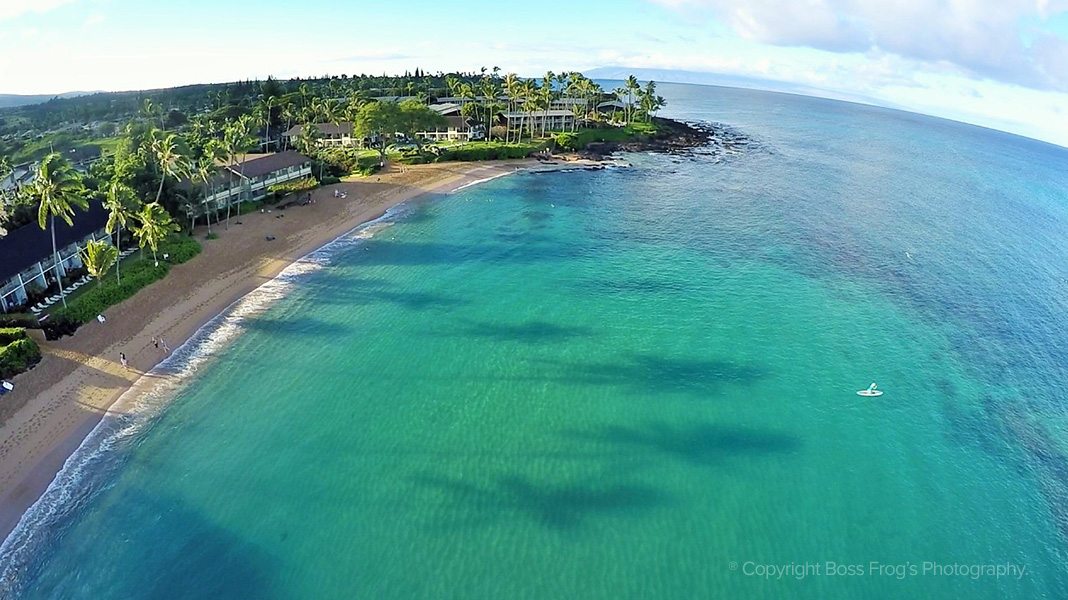
Always SUP with a buddy, and let people know where you are going. Practice in a sheltered location first, like a small bay.
Check which island you’re on. Kapalua Bay on Maui’s west side, Kamehameha Beach in Kona, and Kauai’s Anini Beach can be good places to begin.
Once you’re ready to paddle along the coastline, some great Maui sites are Canoe Beach, Launiupoko, and Black Rock/Ka’anapali Beach.
Ask our friendly staff on Kauai and the Big Island for more stand up paddle board sites.
Don’t Be Afraid To Fall From Your SUP
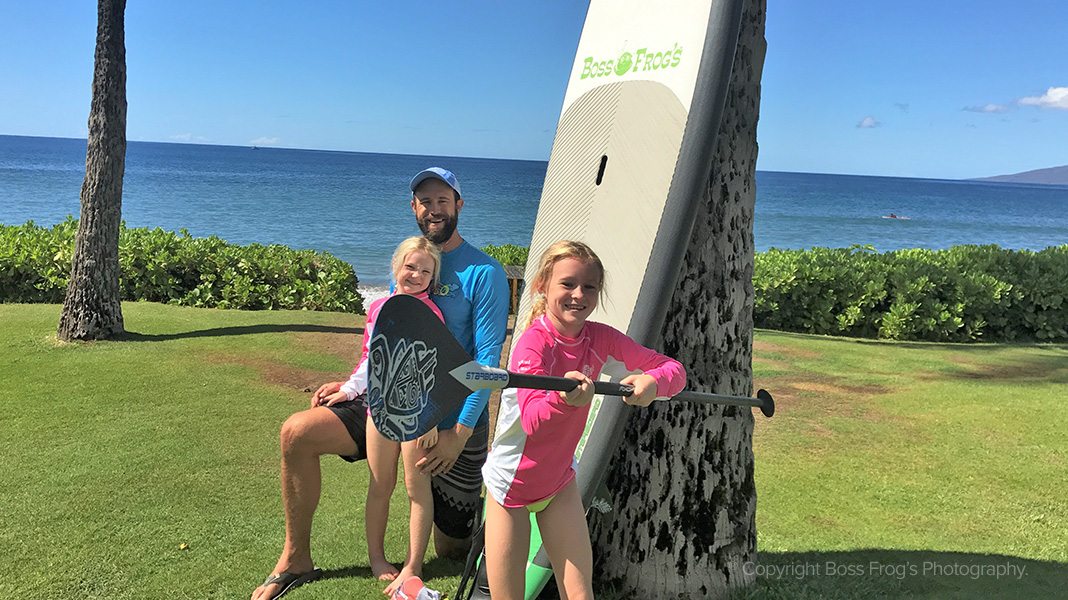
While learning how to SUP, chances are high that you’re going to fall into the water. You’ll probably want to take a dip on purpose, too. No matter how you make it in, it’s all part of the fun!
Make sure that you and your paddle boarding buddies know how to swim before you think about heading out.
Secure your sunglasses with a strap so they don’t get lost. And speaking of losing things, stand up paddle boards are too large to have a leash that attaches to your ankle the way that some surfboards do, so be sure to keep track of your board and paddle while you’re swimming around.
Best Paddle Boarding Conditions

When you’re out stand up paddle boarding, here’s the bottom line: you want calm water and calm weather. Gentle waters are better for balance and for your ability to see the beauty passing beneath your board. Calm weather gives you more time to have fun as you travel “there and back again.”
We want you to stay safe out on the ocean. When offshore winds are blowing (from the land out to the open sea), you must paddle against the wind to return to shore. Even if you are a regular athlete, this can be extremely tough, and you can wear yourself out simply maintaining your position.
If you are out when it’s windy, and you’re having trouble getting back, get on your knees and keep paddling. This will cut the amount of wind controlling your body by half, and should help a little.
Remember – you’re the only one responsible for you when you’re out on a paddle board. If it’s windy, it’s not worth it.
Currents and Paddle Boarding
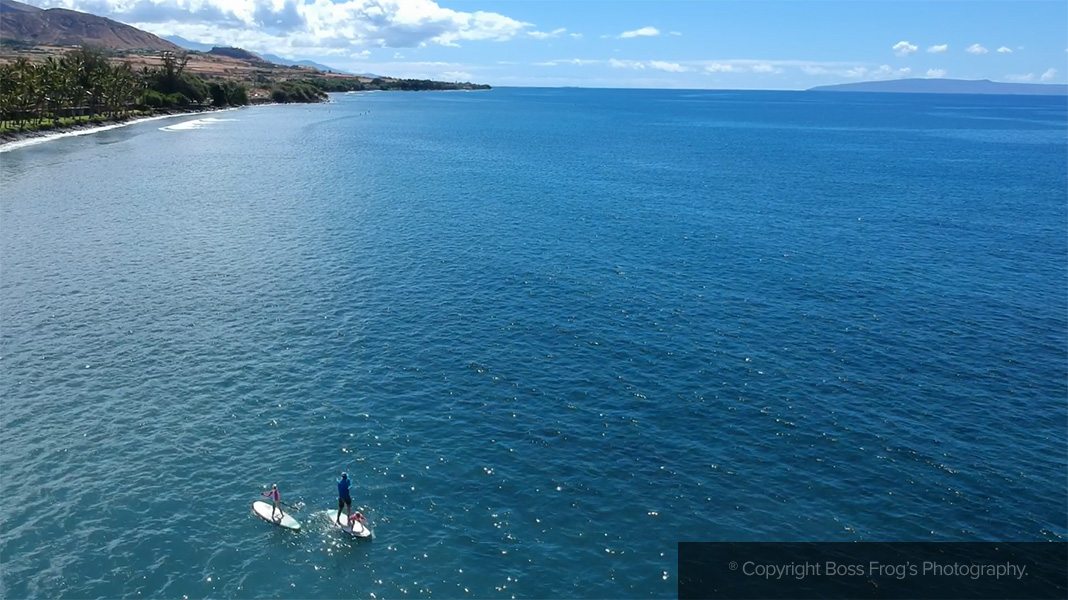
If you are paddling parallel to shore, and you suddenly find that each stroke moves you forward much farther than it did before, you are being carried by a current. It will be more difficult and take more energy to go back the way you came, because you’ll be fighting that current. To save energy, point your SUP toward shore and paddle until you are out of the current.
If you want to use currents to your advantage, get into the water upcurrent from where you want to get out.
Crossing and Caring for Coral
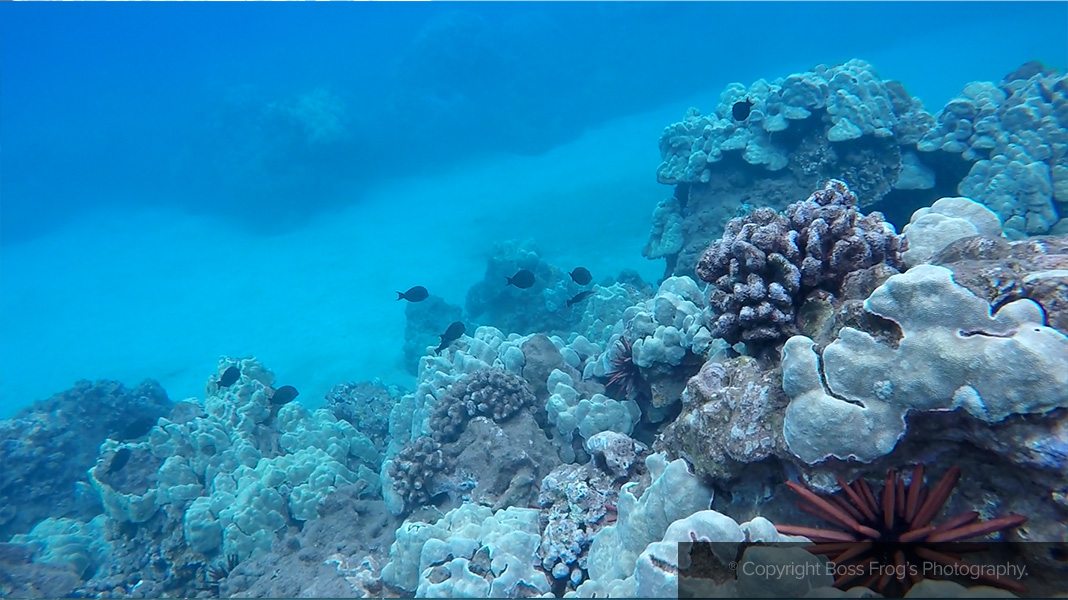
Besides snorkeling, scuba, and snuba, stand up paddle boarding is probably the coolest way to watch marine life along a coral reef. Like forests on land, coral reefs grow in many shapes and sizes. Depending on where the tides are at any given moment, a reef may be very close to the surface or even sticking out of the water. Although coral looks tough like rocks, it is made of delicate animals called polyps. The reef is easily damaged when touched.
Pay attention while paddling so your board (and the fins that act as rudders beneath it) do not run into or across any coral. Not only would that damage the reef, but the jolt can cause you to lose your balance. Falling onto coral heads – and the sea urchins frequently housed within them – can painfully injure you.
To enjoy your time paddle boarding, aim for the light-colored sand channels that weave around and among the reefs. It is easy to distinguish the safe zone from the non, since coral looks dark brown from above. Also, remember to use only reef-safe sunscreen. Add a Boss Frog’s rashguard, surf shorts, and hat, and you’re good to go when it comes to protecting yourself from the sun.
Beyond these safety tips and techniques, ask your friendly Boss Frog’s employees for their personal advice. Beyond that, there is no substitute for getting out there, practicing, and having fun!
Have a great time stand up paddle boarding, and aloha for now!









